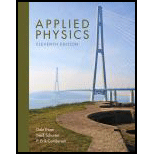
Applied Physics (11th Edition)
11th Edition
ISBN: 9780134159386
Author: Dale Ewen, Neill Schurter, Erik Gundersen
Publisher: PEARSON
expand_more
expand_more
format_list_bulleted
Textbook Question
Chapter 19, Problem 1AC
A microwave oven is designed to draw 11.8 A of current when connected to a 110–-V ac circuit. (a) What is the average power of the microwave? (b) What is the maximum current drawn by the microwave? (c) Provide a rationale for the currant’s value 180° after the beginning of a cycle.
Expert Solution & Answer
Want to see the full answer?
Check out a sample textbook solution
Chapter 19 Solutions
Applied Physics (11th Edition)
Ch. 19.1 - What is the maximum voltage in an ac circuit in...Ch. 19.1 - The instantaneous voltage in an ac circuit at...Ch. 19.1 - If the maximum ac voltage on a line is 165 V, what...Ch. 19.1 - The maximum current in an ac circuit is 8.00 A....Ch. 19.1 - The instantaneous current in an ac circuit is 6.50...Ch. 19.1 - What is the maximum voltage in an ac circuit where...Ch. 19.1 - If the maximum ac voltage on a line is 145 V, what...Ch. 19.1 - The maximum current in an ac circuit is 5.75 A....Ch. 19.1 - Find the maximum current in an ac circuit where...Ch. 19.1 - The instantaneous voltage in an ac circuit at...
Ch. 19.1 - If Imax=4.59 A and 1=4.32 A, what is ?Ch. 19.1 - If 1=1.23 A and Imax=3.41 A, what is ?Ch. 19.1 - Find the effective value of an ac voltage whose...Ch. 19.1 - Find the maximum current in an ac circuit with an...Ch. 19.1 - Find the effective value of an ac voltage whose...Ch. 19.1 - Find the maximum current in an ac circuit with an...Ch. 19.1 - Find the effective value of a current in an ac...Ch. 19.1 - Find the effective value of an ac voltage whose...Ch. 19.1 - What is the maximum current in a circuit in which...Ch. 19.1 - Find the maximum current in a circuit in which an...Ch. 19.1 - A technician uses an oscilloscope to measure an...Ch. 19.1 - A technician uses a cathode ray oscilloscope to...Ch. 19.1 - A maximum voltage of 34.0 V is developed by an ac...Ch. 19.1 - A power plant generator develops a maximum voltage...Ch. 19.1 - A maximum current of 0.700 A flows through a...Ch. 19.1 - If the average power dissipated by an electric...Ch. 19.1 - If the average power dissipation by a hair dryer...Ch. 19.2 - Prob. 1PCh. 19.2 - What power is developed by a device that draws...Ch. 19.2 - Find the output power of a transformer with output...Ch. 19.2 - A heater operates on a 110-V line and is rated at...Ch. 19.2 - A heating element draws 6.00 A on a 220-V line....Ch. 19.2 - Prob. 6PCh. 19.2 - What power is used by a heater that has a...Ch. 19.2 - A heater operates on a 110-V line and is rated at...Ch. 19.2 - A 110- resistance coil draws a current of 5.00 A....Ch. 19.2 - What power is used by a heater with resistance...Ch. 19.2 - VP=30.0V VS=45.0V NS=15.0 turns Find NP.Ch. 19.2 - VP=250V NP=703turns NS=275 turns Find VS.Ch. 19.2 - IP=6.00 A IS=4.00 A VP=39.0 V Find VS.Ch. 19.2 - A step-up transformer on a 115-V line provides a...Ch. 19.2 - A step-down transformer on a 115-V line provides a...Ch. 19.2 - A transformer has 20.0 turns in the primary coil...Ch. 19.2 - If the current is 9.00 A in the primary coil in...Ch. 19.2 - If the voltage in the secondary coil of a...Ch. 19.2 - A neon sign has a transformer that changes...Ch. 19.2 - Prob. 20PCh. 19.2 - The current in the secondary coil of a transformer...Ch. 19.2 - A transformer steps down 6600 V to 120 V. (a) If...Ch. 19.2 - The primary coil of a step-down transformer has...Ch. 19.2 - A step-up transformer has 300 0 turns in the...Ch. 19.2 - A mechanic is testing a transformer that increases...Ch. 19.2 - Prob. 26PCh. 19.3 - Find the inductive reactance (in ohms) of each...Ch. 19.3 - Find the inductive reactance (in ohms) of each...Ch. 19.3 - Find the inductive reactance (in ohms) of each...Ch. 19.3 - Find the inductive reactance (in ohms) of each...Ch. 19.3 - What is the inductive reactance (in ohms) of a...Ch. 19.3 - Find the inductive reactance (in ohms) of a 655-H...Ch. 19.3 - Find the current (in amperes) in each inductive...Ch. 19.3 - Prob. 8PCh. 19.3 - Prob. 9PCh. 19.3 - Find the current (in amperes) in each inductive...Ch. 19.3 - Find the current (in amperes) in an inductive...Ch. 19.3 - Find the current (in amperes) in an inductive...Ch. 19.4 - For a circuit with R=200 ,L=10.0 mH, and f=1.25...Ch. 19.4 - For a circuit with R=12.0 ,L=1.00 mH, and f=900 Hz...Ch. 19.4 - For a circuit with R= 1.00 k, L=50.0 mH, and...Ch. 19.4 - For a circuit with resistance 2.00 k, inductance...Ch. 19.4 - For a circuit with resistance 300 , inductance...Ch. 19.5 - Find the capacitive reactance (in ohms) in each ac...Ch. 19.5 - Find the capacitive reactance (in ohms) in each ac...Ch. 19.5 - Find the capacitive reactance (in ohms) in each ac...Ch. 19.5 - Find the capacitive reactance (in ohms) in each ac...Ch. 19.5 - Find the capacitive reactance (in ohms) in each ac...Ch. 19.5 - Find the capacitive reactance of a 15.0 -F...Ch. 19.5 - Find the capacitive reactance of a 45.0 -F...Ch. 19.5 - Find the capacitive reactance of a 6.00-mF...Ch. 19.5 - Find the capacitive reactance of a 330 -F...Ch. 19.5 - Find the capacitive reactance of a 222 -F...Ch. 19.6 - For an ac circuit with R=1.00 k, C=1.00 F, E=100...Ch. 19.6 - For an ac circuit with R=375 , C=5.00 F, E=20.0V,...Ch. 19.6 - For an ac circuit with R=4.80 k, C=45.0 F,...Ch. 19.6 - For an ac circuit with resistance 145m,...Ch. 19.6 - For an ac circuit with resistance 10.0m,...Ch. 19.7 - Find the impedance and current in each ac circuit....Ch. 19.7 - R=225 , L=10.0 mH, C=0.200 F, f=1.00 kHz, E=15.0 V...Ch. 19.7 - Find the impedance and current in each ac circuit....Ch. 19.7 - R=1.00 k, L=0.700H, C=30.0 F, f=60.0 Hz, E=8.00 V...Ch. 19.7 - A circuit contains a 150 - resistance, a 35.0 -F...Ch. 19.7 - A circuit contains a 225- resistance, a 5.00 -F...Ch. 19.7 - A circuit contains a 175- resistance, a 4.50 -F...Ch. 19.7 - A circuit contains a 575- resistance, a 100 -F...Ch. 19.7 - A circuit contains a 450 - resistance, a 35.0 -F...Ch. 19.7 - A circuit contains a 375- resistance, a 500 -F...Ch. 19.8 - Find the resonant frequency in each ac circuit. 1....Ch. 19.8 - Find the resonant frequency in each ac circuit. 2....Ch. 19.8 - Find the resonant frequency in each ac circuit. 3....Ch. 19.8 - Find the resonant frequency in each ac circuit. 4....Ch. 19.8 - Find the resonant frequency in each ac circuit. 5....Ch. 19.8 - Find the resonant frequency of a circuit...Ch. 19.8 - Find the resonant frequency of a circuit...Ch. 19.8 - Find the resonant frequency of a circuit...Ch. 19.8 - Find the resonant frequency of a circuit...Ch. 19.8 - Find the resonant frequency of a circuit...Ch. 19.10 - Find the actual power produced by a generating...Ch. 19.10 - A generating station operates with a power factor...Ch. 19.10 - Find the apparent power produced by a generating...Ch. 19.10 - Find the apparent power produced by a generating...Ch. 19.10 - A generating station operates with a power factor...Ch. 19.10 - Find the apparent power produced by a generating...Ch. 19.10 - Find the actual power produced by a generating...Ch. 19.10 - A generating station operates with a power factor...Ch. 19.10 - Find the apparent power produced by a generating...Ch. 19.10 - Find the apparent power produced by a generating...Ch. 19.10 - Find the power factor of a generating station...Ch. 19.10 - Find the power factor of a generating station...Ch. 19 - Which of the following describes alternating...Ch. 19 - The voltage, e, and the current, i, in an...Ch. 19 - Which of the following affect the voltage induced...Ch. 19 - Which of the following contribute to the energy...Ch. 19 - Explain the difference between maximum current and...Ch. 19 - Explain the difference between maximum voltage and...Ch. 19 - Explain how power in an ac circuit is related to...Ch. 19 - Explain how power in an ac circuit is related to...Ch. 19 - If the number of turns in the secondary coil of a...Ch. 19 - Prob. 10RQCh. 19 - Discuss the importance of inductive reactance.Ch. 19 - How does the inductive reactance depend on...Ch. 19 - Prob. 13RQCh. 19 - Describe how energy is stored in a capacitor. How...Ch. 19 - Does the current lead or lag the voltage in a...Ch. 19 - Prob. 16RQCh. 19 - Discuss the condition that leads to resonance.Ch. 19 - What is the function of a diode in a circuit?Ch. 19 - Explain the difference between amplification and...Ch. 19 - Prob. 20RQCh. 19 - What is the maximum voltage in a circuit when the...Ch. 19 - If the maximum ac voltage on a line is 185 V, what...Ch. 19 - If the maximum ac voltage on a line is 175 V, what...Ch. 19 - What is the effective value of an ac voltage whose...Ch. 19 - What is the maximum current in a circuit with a...Ch. 19 - What power is developed by a device that draws...Ch. 19 - A heating element draws 4.50 A on a 110-V line....Ch. 19 - What power is used by a heater with resistance...Ch. 19 - A step-up transformer on a 115-V line provides a...Ch. 19 - An inductance of 48.0 mH is connected in series...Ch. 19 - A lamp with resistance 47.5 is connected in...Ch. 19 - (a) What current will flow in a 60.0-Hz ac series...Ch. 19 - A 21.6- resistor and a 38.5- F capacitor are...Ch. 19 - A circuit contains a 175- resistance, a 25.0 -F...Ch. 19 - A circuit contains a 115- resistance, a 35.0-F...Ch. 19 - (a) Find the resonant frequency of a circuit...Ch. 19 - (a) Find the resonant frequency of a circuit...Ch. 19 - Find the apparent power produced by a generating...Ch. 19 - A microwave oven is designed to draw 11.8 A of...Ch. 19 - Before converting alternating current to direct...Ch. 19 - Prob. 3ACCh. 19 - A 65.5-V, 60.0-Hz ac generator is connected to a...Ch. 19 - An AM radio tuner circuit has an inductance of 275...
Additional Science Textbook Solutions
Find more solutions based on key concepts
What class of motion, natural or violent, did Aristotle attribute to motion of the Moon?
Conceptual Physics (12th Edition)
Express the unit vectors in terms of (that is, derive Eq. 1.64). Check your answers several ways Also work o...
Introduction to Electrodynamics
The Ogallala Aquifer a Underlies several states. b is being pumped at a high rate. c is a source of fresh water...
Conceptual Integrated Science
24.25 An air capacitor is made from two flat parallel plates 1.50 mm apart. The magnitude of charge on each pla...
University Physics with Modern Physics (14th Edition)
** Two-lens camera A two-lens camera (see Figure P23.79) has one lens with focal length +15.0 cm located 12.0 c...
College Physics
Explain all answers clearly, with complete sentences and proper essay structure if needed. An asterisk (*) desi...
The Cosmic Perspective Fundamentals (2nd Edition)
Knowledge Booster
Learn more about
Need a deep-dive on the concept behind this application? Look no further. Learn more about this topic, physics and related others by exploring similar questions and additional content below.Similar questions
- A 40-mH inductor is connected to a 60-Hz AC source whose voltage amplitude is 50 V. If an AC voltmeter is placed across the inductor, what does it read?arrow_forwardAn ac source of voltage amplitude 100 V and variable frequency f drives an RLC series circuit with R=10 , L = 2.0 mH, and C=25F (a) Plot the canal through the resistor as a function of the frequency f. (b) Use the plot to determine the resonant frequency of the circuit.arrow_forwardThe average ac current delivered to a circuit is zero. Despite this, power is dissipated in the circuit. Explain.arrow_forward
- Check Your Understanding What happens to the resonant frequency of an RLC series circuit when the following quantities are increased by a factor of 4: (a) the capacitance, (b) the self-inductance, and (c) the resistance?arrow_forwardExplain why at high frequencies a capacitor acts as an ac short, whereas an inductor acts as an open circuit.arrow_forwardIn a purely inductive AC circuit as shown in Figure P21.15, Vmax = 100. V. (a) The maximum current is 7.50 A at 50.0 Hz. Calculate the inductance L. (b) At what angular frequency is the maximum current 2.50A? Figure p21.15arrow_forward
- Check Your Understanding Repeat Example 15.1 for an ac source of amplitude 20 V and frequency 100 Hz.arrow_forwardWhat is the resistance R in the circuit shown below if the amplitude of the ac through the inductor is 4.24 A?arrow_forwardDo Kirchhoff’s rules apply to circuits that contain inductors and Capacitors?arrow_forward
- Suppose you connect a small lightbulb across a DC power supply that has an emf of 5.0 V. You then connect the bulb across a 60.0-Hz AC power supply that has an rms voltage of 5.0 V. Does the bulb dissipate more power on average when it is connected to the DC power supply or the AC power supply? Is the bulb brighter when it is connected to the DC power supply or the AC power supply? Explain.arrow_forwardA 20-mH inductor is connected across an AC source with a variable frequency and a constant-voltage amplitude of 9.0 V. (a) Determine the reactance of the circuit and the maximum current through the inductor when the frequency Is set at 20 kHz. (b) Do the same calculations for a frequency of 60 Hz.arrow_forwardCheck Your Understanding Show that the tins voltages across a resistor, a capacitor, and an inductor in an ac circuit where the tins current is Irmsare given by IrmsR,IrmsXC , and IrmsXL, respectively. Determine these values for the components of the RLC circuit of Equation 15.12. Pave=12t0v0cos (15.12)arrow_forward
arrow_back_ios
SEE MORE QUESTIONS
arrow_forward_ios
Recommended textbooks for you
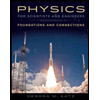 Physics for Scientists and Engineers: Foundations...PhysicsISBN:9781133939146Author:Katz, Debora M.Publisher:Cengage Learning
Physics for Scientists and Engineers: Foundations...PhysicsISBN:9781133939146Author:Katz, Debora M.Publisher:Cengage Learning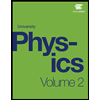
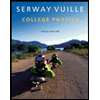 College PhysicsPhysicsISBN:9781285737027Author:Raymond A. Serway, Chris VuillePublisher:Cengage Learning
College PhysicsPhysicsISBN:9781285737027Author:Raymond A. Serway, Chris VuillePublisher:Cengage Learning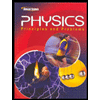 Glencoe Physics: Principles and Problems, Student...PhysicsISBN:9780078807213Author:Paul W. ZitzewitzPublisher:Glencoe/McGraw-Hill
Glencoe Physics: Principles and Problems, Student...PhysicsISBN:9780078807213Author:Paul W. ZitzewitzPublisher:Glencoe/McGraw-Hill Physics for Scientists and Engineers, Technology ...PhysicsISBN:9781305116399Author:Raymond A. Serway, John W. JewettPublisher:Cengage Learning
Physics for Scientists and Engineers, Technology ...PhysicsISBN:9781305116399Author:Raymond A. Serway, John W. JewettPublisher:Cengage Learning

Physics for Scientists and Engineers: Foundations...
Physics
ISBN:9781133939146
Author:Katz, Debora M.
Publisher:Cengage Learning


College Physics
Physics
ISBN:9781285737027
Author:Raymond A. Serway, Chris Vuille
Publisher:Cengage Learning

Glencoe Physics: Principles and Problems, Student...
Physics
ISBN:9780078807213
Author:Paul W. Zitzewitz
Publisher:Glencoe/McGraw-Hill

Physics for Scientists and Engineers, Technology ...
Physics
ISBN:9781305116399
Author:Raymond A. Serway, John W. Jewett
Publisher:Cengage Learning
Introduction To Alternating Current; Author: Tutorials Point (India) Ltd;https://www.youtube.com/watch?v=0m142qAZZpE;License: Standard YouTube License, CC-BY